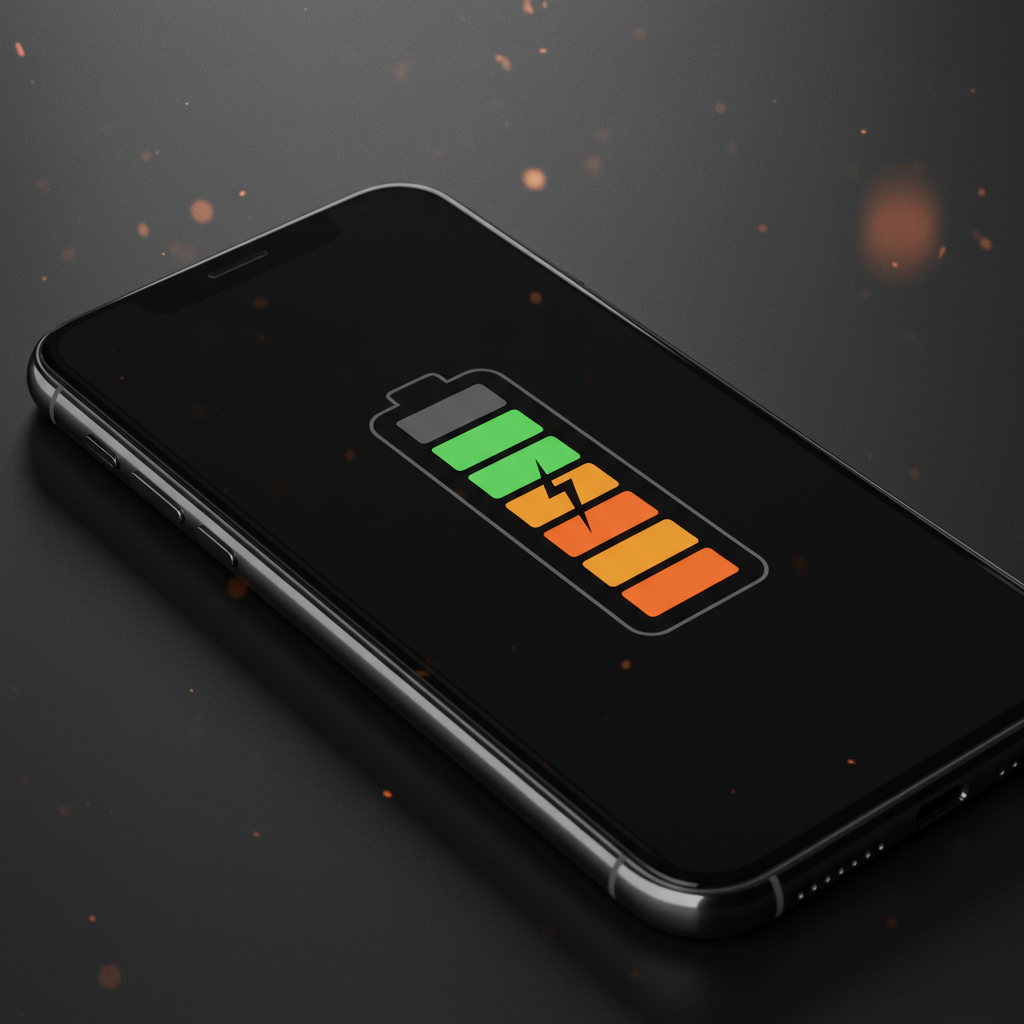Apple appears poised to significantly boost the power capacity in its next top-tier iphone. Fresh speculation suggests the upcoming iPhone 17 Pro Max could pack the largest battery cell ever integrated into an iPhone, potentially reaching a milestone previously common only among its Android rivals. This potential upgrade could dramatically reshape user experience, addressing one of the most consistent demands from consumers: longer battery life.
The intriguing rumor originates from a well-known leaker operating on the Chinese social media platform Weibo, identified as Setsuna Digital or Instant Digital by various reports. According to their insights, the iPhone 17 Pro Max is anticipated to house a formidable 5,000mAh battery. This capacity would mark a notable first for Apple’s smartphone line, crossing the 5,000mAh threshold and setting a new benchmark for iPhone power.
A Jump in Capacity: Comparing Generations
To appreciate the significance of this potential upgrade, it’s helpful to look at its predecessors. The current record holder for the largest iPhone battery is the iPhone 16 Pro Max, reportedly featuring a 4,685mAh or 4,676mAh cell depending on the source. If the leak holds true, the iPhone 17 Pro Max would represent an increase of roughly 315mAh to 324mAh over the already substantial capacity of the 16 Pro Max.
This isn’t just an incremental bump; it represents a percentage increase of approximately 7% compared to the 16 Pro Max. Looking further back, MacRumors compiled a list showing a general trend of increasing capacities in the Pro Max line, though not always consistent jumps:
iPhone 11 Pro Max: 3,969mAh
iPhone 12 Pro Max: 3,687mAh
iPhone 13 Pro Max: 4,352mAh
iPhone 14 Pro Max: 4,323mAh
iPhone 15 Pro Max: 4,422mAh
iPhone 16 Pro Max: 4,676mAh
iPhone 17 Pro Max (Rumored): ~5,000mAh
This history underscores the potential leap represented by hitting the 5,000mAh figure.
Bringing iPhone Batteries Closer to Android Norms
For years, Android flagship phones have frequently launched with 5,000mAh batteries, or sometimes even larger. Devices like the Samsung Galaxy S25 Ultra already sport this capacity. While iPhone batteries have often performed well relative to their size due to Apple’s software and hardware efficiency, reaching this 5,000mAh mark brings the iPhone 17 Pro Max’s raw specification into direct competition with high-end Android devices on paper.
However, raw capacity is only one piece of the puzzle. iPhones have historically excelled at power management, squeezing impressive longevity out of smaller batteries compared to similarly sized Android phones. This makes the news even more compelling: if Apple can maintain its signature power efficiency while incorporating a significantly larger battery, the resulting battery life on the iPhone 17 Pro Max could be truly outstanding.
Translating mAh into Real-World Endurance
Predicting exact battery life solely based on mAh can be complex. However, a larger capacity provides a stronger foundation. Apple’s official figures for recent Pro Max models provide a baseline:
iPhone 16 Pro Max: Up to 33 hours
iPhone 14 Pro Max: Up to 29 hours
iPhone 13 Pro Max: Up to 28 hours
iPhone 12 Pro Max: Up to 20 hours
Based on the roughly 300+mAh increase from the 16 Pro Max, MacRumors suggests that the iPhone 17 Pro Max could potentially push towards 35 hours or even more of battery life under optimal conditions. This would be a significant gain, potentially allowing heavy users to confidently get through a full day and well into the next without needing a charge.
More Than Just Capacity: Other Factors Influencing Life
While a bigger battery is a direct path to more power, actual battery performance is influenced by several other critical factors expected in the iPhone 17 Pro Max.
New Processor Efficiency: The device is expected to feature a next-generation chip, likely the A19 Pro. Apple’s silicon designs have consistently improved power efficiency with each iteration. The A19 Pro should consume less power for the same tasks compared to its predecessors, further contributing to extended battery life.
Modem Technology: The upcoming iPhone will also include a new modem, potentially Qualcomm’s Snapdragon X80. Modem efficiency, especially regarding cellular and Wi-Fi connectivity, plays a significant role in power consumption.
New Features: Conversely, the iPhone 17 Pro Max is rumored to introduce new features and potentially drive more demanding displays or sensors. These additions could increase power draw, potentially offsetting some of the gains from the larger battery and more efficient components.
Increased Thickness: Rumors suggest the iPhone 17 Pro Max might be slightly thicker than the 16 Pro Max (potentially 8.725mm vs 8.25mm). This marginal increase in internal space is often cited as the likely reason Apple can accommodate a larger battery cell, suggesting a direct trade-off between device profile and battery size.
Software Optimizations: Apple continuously refines iOS to improve power management. Upcoming features in iOS 26, such as an “Adaptive Power” mode mentioned in reports, could dynamically make small performance adjustments to conserve battery during high usage periods. Apple has also reportedly improved the charging cycle lifespan of newer batteries via software.
These interlocking factors mean that while a 5,000mAh battery is fantastic news, the final real-world battery life will be a culmination of hardware and software advancements.
Weighing the Credibility of the Leak
It’s important to approach any pre-release leak with a degree of caution. While leakers like Setsuna Digital/Instant Digital have cultivated a reputation and have been accurate on several past details (like certain iPhone 14/15 design elements, specific Apple Watch details, and landscape front cameras on iPads), their track record is not perfect.
TechRadar advises taking the leak “with a pinch of salt,” citing the single source nature of the claim and the relatively large jump in capacity compared to typical year-over-year increases. However, MacRumors notes that due to a history of specific accurate predictions, including past iPhone battery details, this particular leak is considered “worth taking seriously.” The fact that this rumor aligns with speculated design changes, like increased thickness, also adds a layer of plausibility.
Why This Upgrade Matters to Users
Ask any smartphone user for their top desired improvement, and “longer battery life” consistently ranks at or near the top. Users want to go through their day without range anxiety, stream content, play games, use demanding apps, and stay connected without constantly searching for a charger.
For the iPhone 17 Pro Max, which typically targets power users and professionals who rely heavily on their device throughout the day, a substantial battery upgrade would be a major selling point. It could make the device feel like a truly significant step forward, especially if other rumored upgrades are more incremental. A 5,000mAh battery combined with Apple’s efficiency could deliver the “true full day” or even multi-day battery life that many users crave.
The Anticipated Timeline
Based on Apple’s historical release cycles, the iPhone 17 Pro Max, along with the rest of the iPhone 17 lineup, is expected to be officially unveiled in September. While this leak specifically concerns the highest-end Pro Max model, some reports speculate that if the 17 Pro Max is getting a battery boost, there’s a “fair chance” other iPhone 17 models might see corresponding capacity increases as well. We’ll have to wait for the official announcement to confirm the final specifications across the range.
Frequently Asked Questions
What is the rumored battery size for the iPhone 17 Pro Max?
Current leaks, primarily from Weibo user Setsuna Digital (Instant Digital), suggest the iPhone 17 Pro Max could feature a battery capacity of approximately 5,000mAh. If accurate, this would be the largest battery ever included in an iPhone model, surpassing the 4,685mAh or 4,676mAh capacity found in the iPhone 16 Pro Max.
How does the iPhone 17 Pro Max’s rumored battery compare to previous iPhones and Android phones?
The rumored ~5,000mAh capacity would be a significant increase over previous iPhone batteries, including roughly 315-324mAh more than the iPhone 16 Pro Max. Historically, 5,000mAh batteries have been more common in high-end Android flagships like Samsung Galaxy S Ultra models. This leak suggests Apple is potentially aligning its top-tier iPhone battery size with many Android competitors, though iPhones are often noted for achieving strong battery life even with smaller capacities due to efficiency.
Will the larger battery on the iPhone 17 Pro Max guarantee significantly longer battery life?
While a larger 5,000mAh battery provides the potential for much longer usage, actual battery life depends on several factors. Efficiency gains from the new A19 Pro chip and updated modem, plus software optimizations like iOS 26’s Adaptive Power, will help. However, new features might consume more power. While estimates suggest potentially reaching 35 hours or more, the real-world impact will be a balance of all these elements, and it’s not guaranteed to scale perfectly 1:1 with the capacity increase. Leakers’ track records are also mixed, so it’s best to consider this a strong possibility rather than a certainty until the official announcement.
Conclusion
The possibility of the iPhone 17 Pro Max housing a 5,000mAh battery is one of the most exciting rumors surrounding Apple’s next flagship. While originating from a leak and requiring official confirmation, this potential upgrade directly addresses a major user pain point. Combining this larger capacity with Apple’s renowned efficiency and expected silicon improvements could result in truly exceptional battery life. As we approach the expected September launch, all eyes will be on whether Apple delivers this sought-after power boost, potentially making the iPhone 17 Pro Max a battery life champion in the smartphone market.




